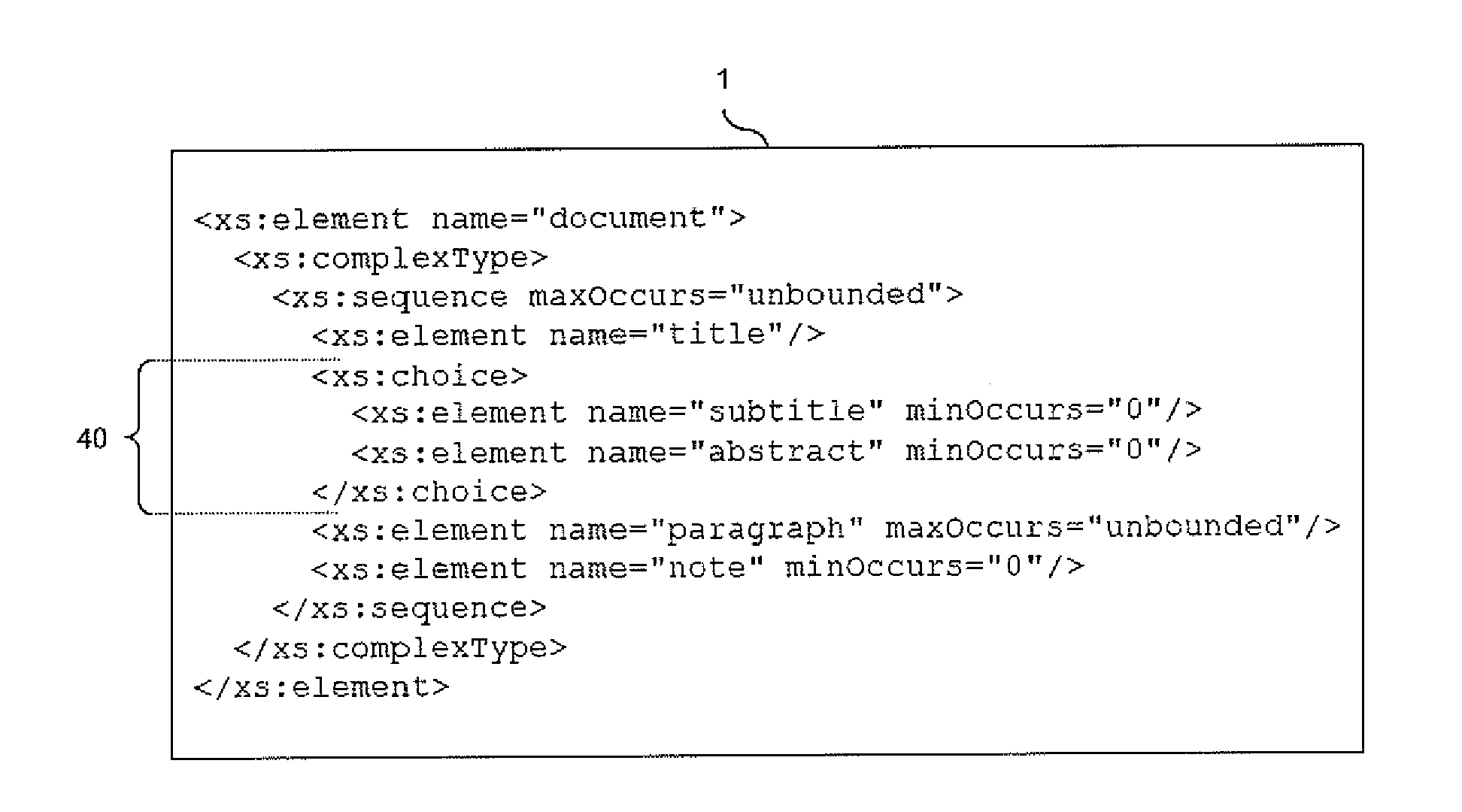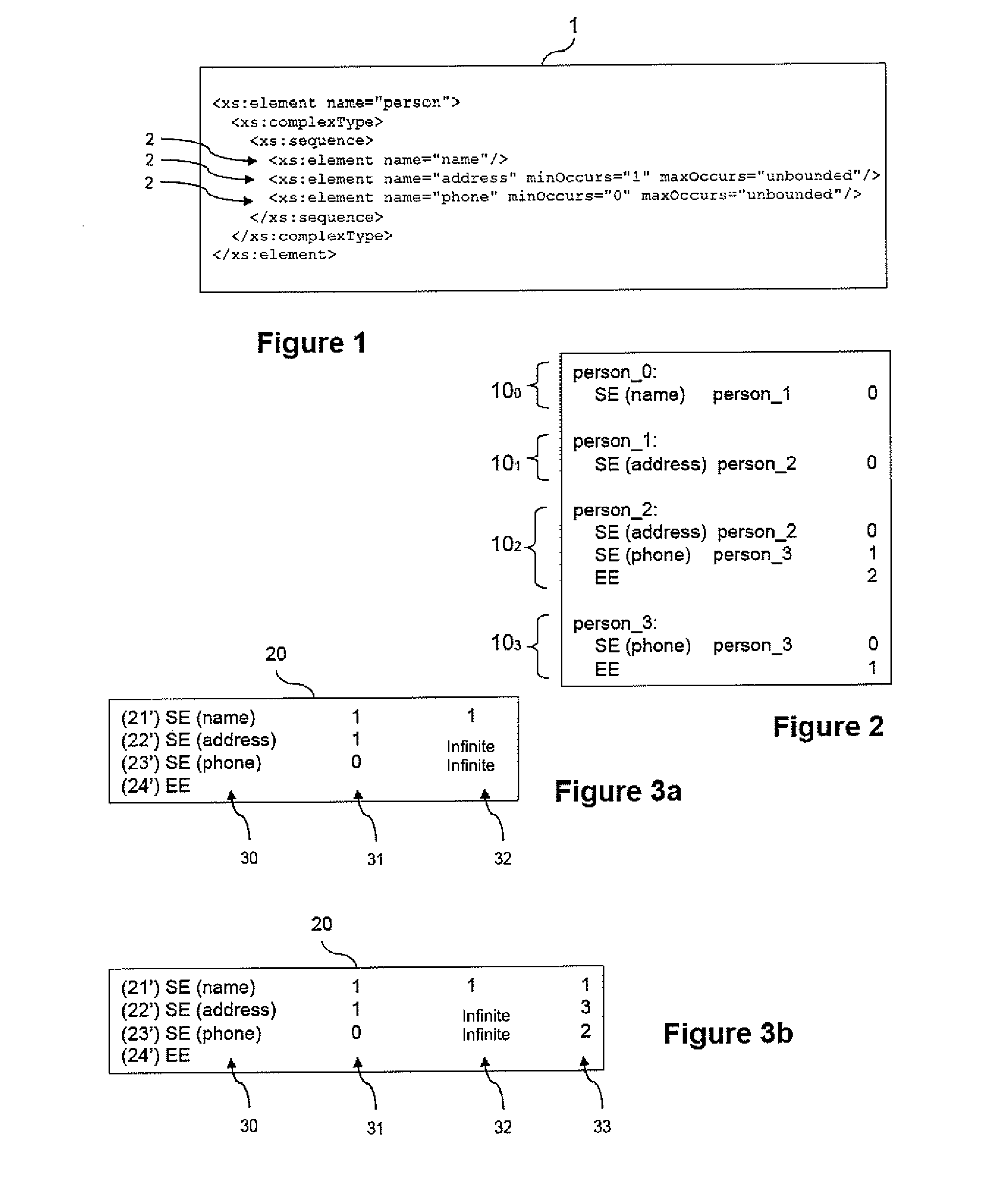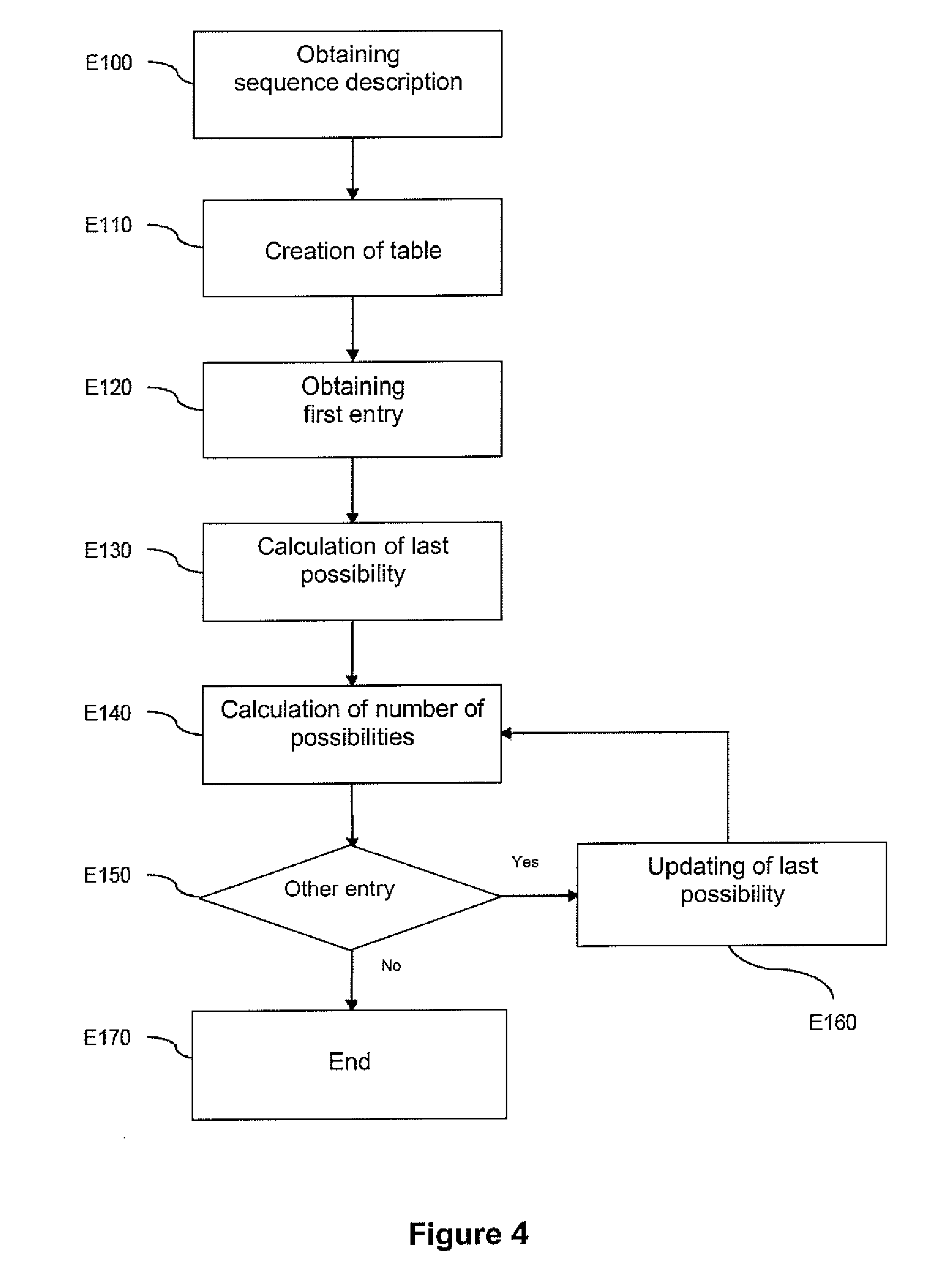Method of coding or decoding a structured document by means of an XML schema, and the associated device and data structure
a structured document and schema technology, applied in the field of coding or decoding structured documents by means of xml schemas, can solve the problems of large amount of memory space, long processing time of xml documents, and prolix xml syntax, and achieve the effect of limiting processing operations
- Summary
- Abstract
- Description
- Claims
- Application Information
AI Technical Summary
Benefits of technology
Problems solved by technology
Method used
Image
Examples
Embodiment Construction
[0128]In order to illustrate the present invention, a description is first of all given, with reference to FIGS. 3 to 5, of a simple implementation for the case of the XML Schema in FIG. 1. This describes a simple sequence of elements and corresponds to a frequent case of XML Schema or a fragment of such a schema.
[0129]The method according to the invention will next be illustrated, with reference to FIGS. 6 to 12, in a more general case.
[0130]As shown in FIG. 2, the structure dictionaries configuring an encoder or decoder according to the techniques of the prior art are numerous and comprise redundant information.
[0131]FIGS. 3a and 3b illustrate representations, in the form of tables, to be stored in the memory of the encoder or decoder, and making it possible to configure the latter from the XML Schema 1.
[0132]FIG. 3a shows a table 20 containing all the XML elements able to be present in the “person” sequence defined by the XML Schema 1 (column 30), with their minimum number (colum...
PUM
 Login to View More
Login to View More Abstract
Description
Claims
Application Information
 Login to View More
Login to View More - R&D
- Intellectual Property
- Life Sciences
- Materials
- Tech Scout
- Unparalleled Data Quality
- Higher Quality Content
- 60% Fewer Hallucinations
Browse by: Latest US Patents, China's latest patents, Technical Efficacy Thesaurus, Application Domain, Technology Topic, Popular Technical Reports.
© 2025 PatSnap. All rights reserved.Legal|Privacy policy|Modern Slavery Act Transparency Statement|Sitemap|About US| Contact US: help@patsnap.com



